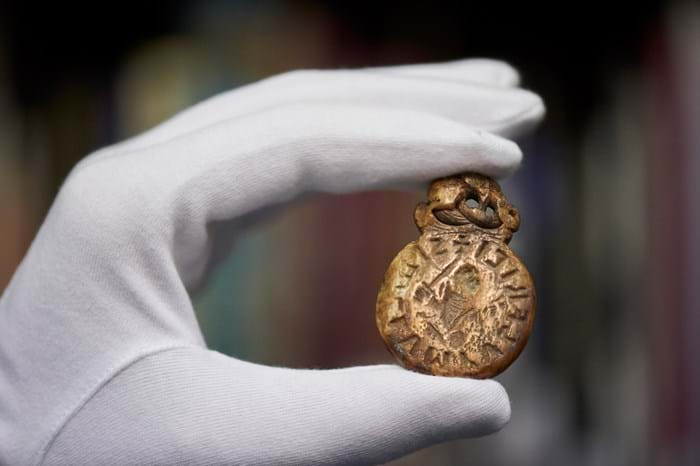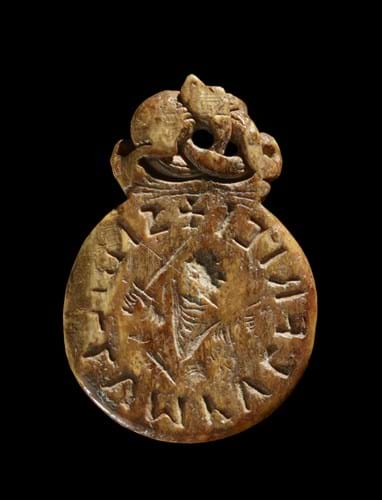The seal, used to ensure documents remained private, was made in England shortly before the invasion of William the Conqueror and is one of only five examples known to have survived. It will now join two others owned by the museum.
The museum bought the seal from its private owner earlier this year with the help of funds from John H Rassweiler, the Ruddock Foundation for the Arts, the Henry Moore Foundation and British Museum Patrons.
It first tried to buy the object in 1977 when it was outbid by the British Rail Pension Fund (BRPF). Following that auction, the BRPF allowed the seal to be displayed in the museum on long-term loan.
It stayed on loan until 1996 when it was auctioned again and the museum was again outbid, this time by a private collector.

The matrix seal, owned by Wulfric, featuring a sword and serpent devouring itself. It has been bought by the British Museum.
Lloyd de Beer, the Ferguson curator of Medieval Britain and Europe at the British Museum said: “We’re delighted to have this incredible object join our collection. These things are extremely rare and it is an object that brings us close to a pivotal moment in history. Within a generation England would be completely transformed, and this object introduces us to one of its people.”
The seal bears the text SIGILLVM WULFRICI meaning ‘Beyond this seal Wulfric leaves no trace’. No other evidence survives of Wulfric but the fact that he owned a seal implies he was of high status. The museum said it is very rare for evidence of a named person to survive from the pre-conquest period, and therefore this seal is a “valuable window into life in England before society was transformed after the invasion of the Normans”.






